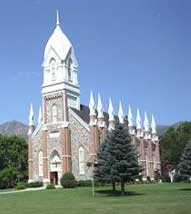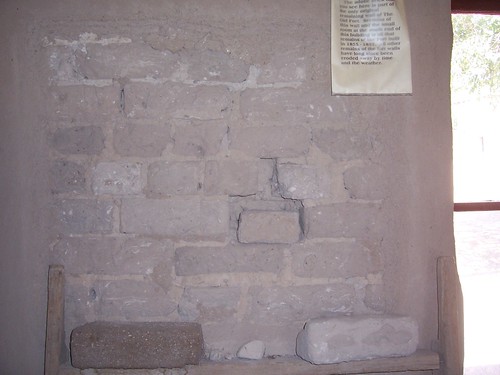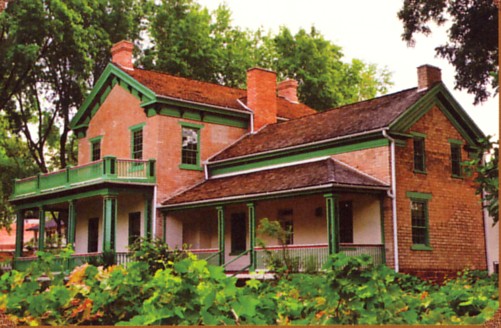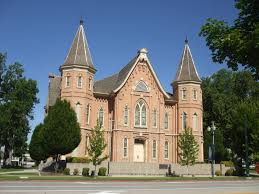
Image credit: Chen Wang,
Deseret NewsCraig Miller, FamilySearch director of member needs, demonstrated New FamilySearch (NFS) to LDS-related media representatives recently, according to reports in the Deseret News’s LDS Church News. This writer did not receive an invitation, as he has for recent Ancestry.com blogger/media events, leading one to question FamilySearch’s understanding of online marketing. True, the event targeted media providing news exclusively to members of FamilySearch sponsor, the Church of Jesus Christ of Latter-day Saints (LDS) and this writer primarily attempts non-denominational coverage. But were any LDS family history writers included?
I made a quick perusal of online genealogy news sources that I consider to exclusively target the LDS audience, including Ileen Johnson’s FHCNET, Sue Maxwell’s Granite Genealogy, Renee (Zamora)’s Genealogy Blog, and Ohana Software’s Ohana Insights Blog. While Miles Meyer’s blog is not LDS-specific, his insights as one of the first adopters of New FamilySearch, his training presentations, and his participation in online communities are well known in the online LDS genealogy community. None of these have published articles from the event.
No doubt the online LDS genealogy community was passed by because they are already engaged in family history, whereas the LDS Church News and Meridian Magazine reach those not now participating. Still…
Can FamilySearch Open Up?
Long-time readers know I campaigned for years before Ancestry.com started opening up to the genealogy community. FamilySearch, now years behind, has much larger obstacles to overcome:
- FamilySearch is part of a large, non-profit bureaucracy. Having worked in both for-profit and non-profit organizations, I think large, non-profits are inherently affected by inertia. Take the DMV, the IRS, the SSA, the military, government contractors, etc. Change in these organizations can be glacially slow.
- FamilySearch is part of a church that is often targeted with opportunistic lawsuits. As a result, the Church has extremely onerous intellectual property (IP) clearance processes to approve public comments. These seem to be designed to expedite dismissal of frivolous IP lawsuits. Unfortunately, the result is that the time investment involved in releasing any information is often more than most employees are willing to make.
- Supervisors in the Church, which owns FamilySearch, have reserved the privilege of making some news announcements. As believing members of the Church, FamilySearch employees happily and willingly defer this responsibility to the Church. As a result, simple announcements that are important to the genealogy community are sometimes overlooked by the Church.
For example, coverage of the mid-December media event quotes Elder Richard J. Maynes as the Church’s executive director over FamilySearch. The news of Elder Maynes assignment as executive director was broke by the now defunct Shoebox Genealogy blog some 19 months ago, but I’ve never seen any announcement of this appointment by either the Church or FamilySearch, despite the importance to the genealogy community.
NFS Release to Non-LDS?
With the rollout of NFS to members of the Church (mostly) complete, the rest of the genealogical community are increasingly interested in when access will be given outside the Church. The LDS Church News articles made it clear that the current version of New FamilySearch is designed for Church members. Representatives of FamilySearch explained that NFS was designed to
- Simplify the process for members who wish to perform temple ordinances for their ancestors.
- Reduce the duplication of temple ordinances for ancestors.
- Enable collaboration of genealogical research by providing one common pedigree for researchers.
You will notice that only the final point of the three is applicable to genealogists outside the Church. The information given to LDS media representatives is noticeably specific to Church members; no information was given about when the rollout to other genealogists will begin.

Image credit: R. Scott Lloyd, Church News
Genealogical Maturity
Miller demonstrated New FamilySearch by entering the name of a reporter’s deceased grandfather. “Immediately it became clear that the reporter’s great-aunt was in the database twice…in one instance erroneously, as she was identified as a male.” This is a common situation among data submitted by members of the Church. The Church has made a number of changes since 1969 to make family history easier for members, resulting in large amounts of erroneous information. Processes and requirements used to be genealogically sound, which made them overly complex for new members capturing first-hand knowledge.
Rather than bifurcating requirements for submission of first-hand knowledge, the Church dropped tools, training, and requirements necessary for research beyond a person’s personal knowledge. The Church dropped the requirement that submissions include sources, and eliminated evidence methodology training from its family history manuals. (Compare the 1951 A Guide for Genealogical Research, with the 2009 Members Guide and Instructors Guide. Try to find in the modern training the evidence methodology presented in Chapter 8 and elsewhere in A Guide…)
Genealogists outside the Church will cringe when ancestral lines converge with Church members’. Genealogists will then find the data used to seed NFS is predominantly genealogical maturity level (GML) one: submitters depended on compiled genealogies, depended on instinct and logic instead of evidence, sources are not present, and information about multiple individuals is often combined into one person. A GML of one is charitable where inconsistencies are present such as fathers born before sons. Hopefully, this experience doesn’t discourage outside contributors like it has some members.
While the preloaded data is clearly GML 1, here’s how I would grade the NFS software itself. GML ranges from 0 (worst) to 5 (best). See my articles on genealogical maturity level for more information. This is a little subjective, so I hesitate to give an overall score.
| Category | GML | Comments |
| Sources | 1 | Data preloaded by FamilySearch was all compiled genealogies.
Makes source specification extremely onerous.
Does not teach the importance of source-based genealogy.
Does not teach source interpretation or ranking of sources. |
| Citations | 1 | Excludes sources specified by Ancestral File contributors.
Excludes sources specified by PRF contributors.
Excludes sources specified by TempleReady contributors.
Does not clearly identify sources of data preloaded by FamilySearch.
Specifies data load dates rather than source creation dates.
Does not support manuscript source templates.
Does not support source provenance or quality assessment.
Does not support industry standard citations. |
| Information | 1 | Does not teach primary and secondary information (vs. source).
Does not support capture of information separately from conclusions.
While the inner/outer person architecture could have been used to implement this, the large amount of preloaded compiled genealogies created IOUSes, leading to de-emphasis of this architectural feature. |
| Evidence | 2 | While NFS does not support user evaluation of evidence quality, I give it a 2 because the system has some rules employed in choosing default values for summary display.
However, it does not require evidence.
Basic API calls exclude evidence, requiring multiple calls to get sources.
Does not support correlation of indirect evidence.
Does nothing to promote proficient or stellar use of evidence.
I need to think about NFS support for conflicting evidence. |
| Conclusions | 3 | Supports selection of conclusion, discussion, and retention of conflicting evidence. (Remember, this score is for the system, not for the data or the behavior of users, which might be different.)
Does not teach or encourage sound reasoning.
Does not enable use of indirect evidence, beyond notes (although I don’t know what I expect it to do beyond notes).
Does not teach or inspire proficient conclusions in users. |
| Conclusion Trees | 2 | Uncombines are time consuming and difficult.
User interface makes analysis during combine difficult.
Does not require evidence before performing combines.
Allows merging of compiled genealogies into tree.
Does not manage evidence separately from conclusion tree.
Does not allow publication of high-quality conclusions, either directly or via data export. |
Before making New FamilySearch available to genealogists outside the Church, FamilySearch must ask itself if the user experience is positive enough to encourage outside participation. If not yet good enough, will users return after incremental improvements are made?
Tell me what you think. Click on Comments, below, or send me a message that I can share publicly.
Do you agree with my evaluation? How would you score NFS? Is NFS ready for general release? Do you contribute? Why or why not? If not contributing now, what improvements must be made before you will contribute?
Sources
To read the LDS Church News articles for yourself, see:
- R. Scott Lloyd, “Revolution in Family History Work,” LDS Church News, 26 December 2009, pp. 3-4; available online (http://www.ldschurchnews.com/articles/58377/Revolution-in-family-history-work.html : accessed 27 December 2009).
- “Tips for Using New FamilySearch,” LDS Church News, 26 December 2009, p. 3; available online (http://www.ldschurchnews.com/articles/58378/Tips-for-using-New-FamilySearch.html : accessed 27 December 2009).
- “Questions about New FamilySearch,” LDS Church News, 26 December 2009, p. 4; available online, (http://www.ldschurchnews.com/articles/58375/Questions-aboutNew-FamilySearch.html : accessed 27 December 2009).









































 The new award
The new award 